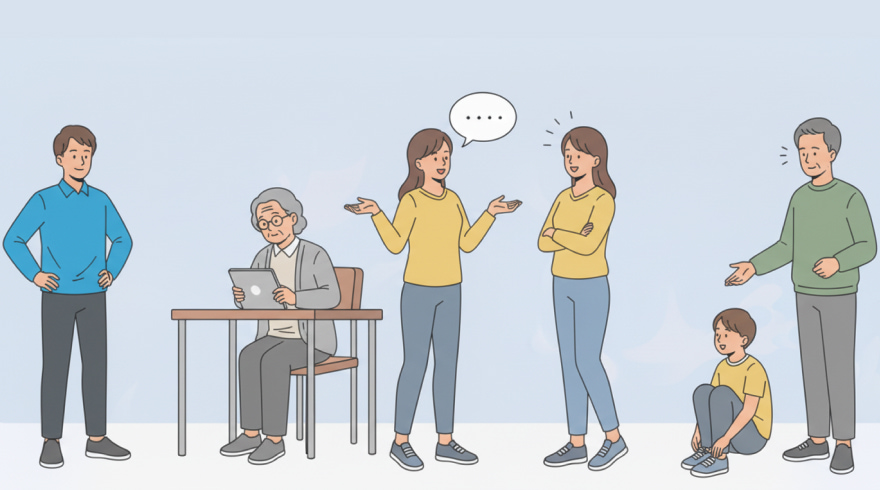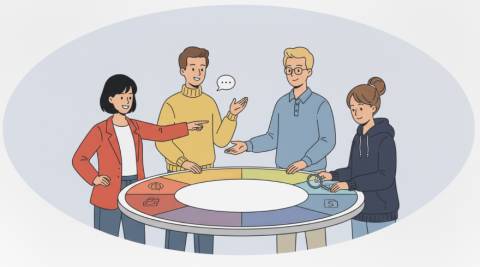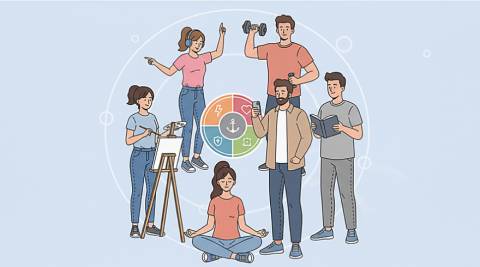Decoding Communication Style: A Practical Guide to Improving Interpersonal Dynamics

What Is a Style Diagnostic and Why It Matters
Every workplace conversation carries a hidden blueprint: pace, tone, directness, and how much context people expect or supply. A style diagnostic translates those patterns into accessible insight, helping professionals reduce friction, elevate clarity, and adapt their delivery to fit the moment. Rather than labeling people, a well-designed diagnostic illuminates tendencies, triggers, and flex points so that collaboration becomes deliberate rather than accidental. This clarity improves how teams coordinate, negotiate, and make decisions under pressure.
Within structured programs, a communication style assessment functions like a map that turns vague preferences into practical guidance for daily interactions. The process surfaces how individuals give feedback, absorb information, and handle ambiguity without reducing them to stereotypes. You can use it to align expectations, tailor coaching, and create shared language so conversations move faster and misunderstandings fade. When the insights are integrated into routines, leaders can calibrate tone, sequence complex messages more thoughtfully, and nudge meetings toward productive outcomes.
- Clarifies how people prefer to receive direction and updates.
- Reveals blind spots in listening, questioning, and summarizing.
- Creates a common vocabulary for debriefs and retrospectives.
- Supports inclusion by honoring different ways of processing information.
How Style Awareness Elevates Teams and Leaders
High-performing groups rarely communicate by accident; they codify norms, measure outcomes, and adapt. Style awareness improves meetings, prioritization, and stakeholder management because signals are interpreted consistently. When teammates grasp each other’s preferences, they can choose the right medium, cadence, and level of detail, which keeps momentum up and rework down. The value compounds when managers model flexible delivery and coach for precision and empathy at the same time.
During onboarding and change initiatives, many organizations add a communication styles assessment to reduce ramp time and prevent avoidable friction. The shared insight helps people anticipate reactions, craft clearer requests, and spot moments where tone or timing could be adjusted. Leaders can align decision rights, escalate less, and foster psychological safety by normalizing different approaches to messaging. Over time, this reduces bottlenecks, elevates trust, and makes collaboration more resilient under stress.
- Sharper handoffs between roles with different information needs.
- Cleaner escalation paths based on agreed communication norms.
- Coaching conversations that target observable behaviors.
- Fewer email loops and faster resolution of ambiguous tasks.
Core Dimensions, Models, and Frameworks
Most frameworks examine dimensions like directness versus diplomacy, task focus versus relationship focus, pace of interaction, and appetite for detail. Some models emphasize context sensitivity, while others highlight power dynamics and turn-taking patterns. The best approach is to treat any model as a lens, not a verdict, and then validate observations with real-world interactions. This prevents oversimplification and keeps the emphasis on behavior change rather than labels.
For individual reflection, a guided workbook can complement a communication style self assessment by linking tendencies to specific rituals, such as meeting check-ins or feedback scripts. You might analyze responses to conflict, preferred mediums for nuanced topics, and how often you invite clarifying questions. Teams can then cross-compare patterns and agree on norms that respect differences while aligning on outcomes. When models are used this way, they unlock shared understanding without constraining growth.
- Directness and candor versus harmony and tact.
- Structured planning versus improvisational flow.
- High-context narratives versus concise bullet-driven updates.
- Visual summaries versus verbal exploration.
Benefits and Strategic Use Cases
Organizations invest in style diagnostics to accelerate onboarding, reduce churn, and improve customer experience. Practical gains show up in faster decision cycles, more cohesive cross-functional work, and stronger stakeholder relationships. Sales and support teams communicate more effectively across diverse audiences, while product teams cut through noise and align on intent before debating solutions. The benefits extend to well-being because clarity lowers stress and prevents avoidable conflict.
Across the employee lifecycle, leaders deploy communication style assessments to support promotions, succession planning, and change adoption. The insight makes coaching concrete, because it connects interpersonal habits to outcomes like project velocity and customer satisfaction. When a team shares results transparently, they can establish simple protocols for updates, feedback, and retros that stick. That consistency translates into measurable performance improvements and better engagement scores.
- Onboarding playbooks that adapt to different processing styles.
- Leadership programs that practice message framing and timing.
- Customer-facing scripts that flex for technical and non-technical audiences.
- Crisis communication drills that standardize escalation and debrief rhythms.
Step-by-Step Process to Run Your Diagnostic
Start by clarifying objectives and the behaviors you want to influence, such as cleaner handoffs or faster approvals. Select a framework that fits your culture, then align sponsors on how results will be used. Communicate timelines, privacy guidelines, and the feedback loop so participants know what to expect. Finally, define how insights feed into rituals like 1:1s, sprint reviews, and leadership meetings.
To encourage ownership, pair your rollout with a self assessment communication style reflection that prompts people to set personal goals. After the data collection, host a debrief where participants translate insights into two or three experiments for the next month. Follow up with coaching, templates, and light-touch reminders so new habits have a chance to stick. Close the loop by measuring outcomes such as cycle time, rework, and satisfaction trends.
- Set goals, select a model, and brief participants.
- Collect data and protect privacy.
- Debrief insights and define small experiments.
- Measure changes and iterate with intent.
Interpreting Results and Turning Insight into Action
Data without context can mislead, so evaluate patterns alongside real work artifacts like emails, meeting notes, and ticket threads. Look for mismatches between intent and perception, and examine moments where miscommunication created delay or tension. Translate findings into specific behavior shifts: ask a clarifying question before debating, confirm decisions in writing, or preface feedback with intent and impact. Then build simple cues into workflows to sustain the changes.
For growth plans, treat a communication styles self assessment as a baseline and commit to periodic rechecks during major projects. You can track progress by observing fewer escalations, tighter summaries, and clearer decision logs. Managers should reinforce improvements publicly and coach gently when old habits resurface. Over time, these small adjustments compound into a culture where clarity and empathy coexist.
- Convert insights into two-sentence operating agreements.
- Practice micro-skills like summarizing and checking for understanding.
- Codify norms in team charters and onboarding guides.
- Review metrics monthly to celebrate progress and adjust.
Choosing Tools and Formats That Fit Your Context
Tool selection should balance methodological rigor, user experience, data security, and administrative overhead. In many organizations, a mix of surveys, observation templates, and workshops beats any single approach. For organizations with diverse needs and budgets, teams often compare vendors by psychometrics, integrations, and reporting depth. In addition, buyers evaluate licensing models to scale usage across departments efficiently.
When comparing options, teams often shortlist platforms that bundle coaching resources with communication style assessment tools to accelerate adoption. The matrix below sketches typical formats and trade-offs, helping you select a method that fits your constraints.
| Format | Best For | Time Required | Depth of Insight |
|---|---|---|---|
| Standardized Survey | Large rollouts and benchmarking | 15–25 minutes | High, with robust reporting |
| Facilitated Workshop | Team alignment and practice | 2–4 hours | High, experiential learning |
| Manager-Led Debrief | Small teams and coaching | 45–60 minutes | Medium, tailored DISCussion |
| Lightweight Quiz | Quick orientation and awareness | 5–10 minutes | Medium, good for intros |
For quick awareness, many organizations start with a communication style assessment quiz and then progress to deeper debriefs and practice labs. Over time, the stack can evolve to include scenario libraries, observation guides, and AI-assisted summaries. Whatever you choose, ensure the tool supports iteration so insights become habits rather than novelty.
Tips, Ethics, and Common Pitfalls
Ethical use starts with consent, clarity, and respect for nuance. Participants should understand why the diagnostic is being used, who will see the results, and how insights will influence work. Avoid labeling people or weaponizing profiles; treat them as hypotheses to be tested in real-world interactions. Most importantly, keep the focus on behavior that can change, not fixed traits.
To build competence, teams can adopt a cadence that pairs practice with a communication styles self assessment exercise so people observe shifts over time. Leaders should model curiosity, invite feedback on their own delivery, and normalize course corrections. When pitfalls arise, address them openly and adjust norms so the process remains inclusive and constructive. That mix of transparency and iteration protects trust and sustains improvement.
- Do use results to inform experiments, not to pigeonhole colleagues.
- Do revisit norms after major org changes or leadership transitions.
- Don’t publish individual reports without explicit permission.
- Don’t confuse style preferences with competence or potential.
FAQ: Practical Answers for Practitioners and Learners
How accurate are style diagnostics for real-world work?
Most instruments are directionally useful when paired with observation, coaching, and follow-through. Validity improves when teams cross-check patterns against meeting behavior, written updates, and stakeholder feedback. The most reliable insights come from repeated cycles of reflection, practice, and review rather than one-off testing.
What if my team has different preferences across roles?
That diversity is an advantage when norms are explicit and flexible. You can create simple operating agreements that specify mediums, timing, and detail level for different workflows. By reviewing these agreements quarterly, teams preserve agility while honoring individual strengths.
Where can I start if budget and time are limited?
A pragmatic entry point is to pilot a lightweight tool with one small group before scaling. Many teams explore a free online communication style assessment as a low-friction way to build initial awareness. After the pilot, you can add workshops or coaching to deepen skill and adoption.
How should we handle privacy and data sharing?
Set clear rules about who can access reports, how long data is stored, and how insights are used. Transparency builds trust and encourages honest participation across departments. Some organizations choose options labeled as a communication style assessment free of invasive tracking to simplify governance.
What’s the difference between quick quizzes and enterprise platforms?
Short instruments emphasize speed and accessibility, while enterprise suites add analytics, integrations, and role-based dashboards. Your choice depends on scale, compliance needs, and the depth of behavior change you seek. Many companies begin with an online communication style assessment and later migrate to a fuller solution as adoption grows.
Latest News



